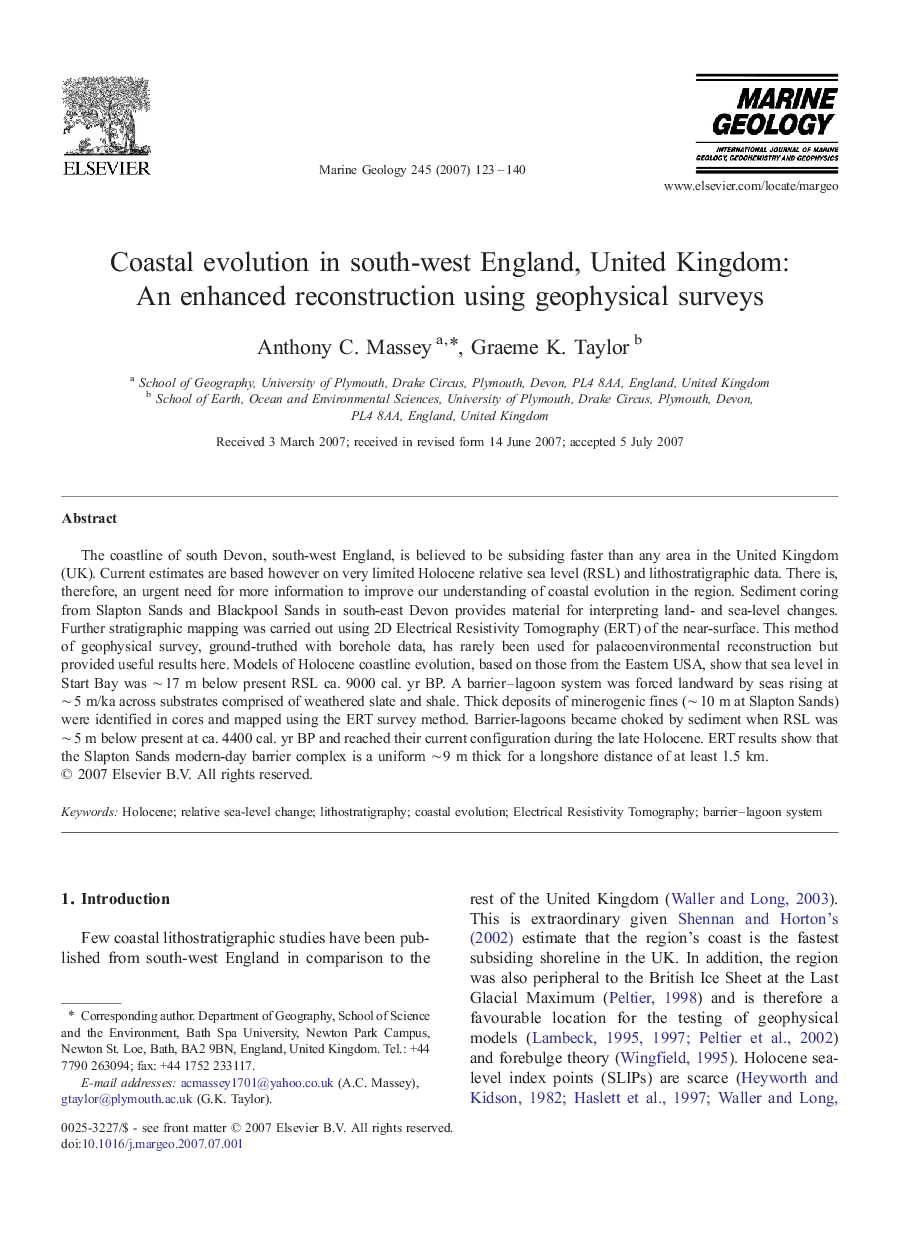| Article ID | Journal | Published Year | Pages | File Type |
|---|---|---|---|---|
| 4719503 | Marine Geology | 2007 | 18 Pages |
The coastline of south Devon, south-west England, is believed to be subsiding faster than any area in the United Kingdom (UK). Current estimates are based however on very limited Holocene relative sea level (RSL) and lithostratigraphic data. There is, therefore, an urgent need for more information to improve our understanding of coastal evolution in the region. Sediment coring from Slapton Sands and Blackpool Sands in south-east Devon provides material for interpreting land- and sea-level changes. Further stratigraphic mapping was carried out using 2D Electrical Resistivity Tomography (ERT) of the near-surface. This method of geophysical survey, ground-truthed with borehole data, has rarely been used for palaeoenvironmental reconstruction but provided useful results here. Models of Holocene coastline evolution, based on those from the Eastern USA, show that sea level in Start Bay was ∼ 17 m below present RSL ca. 9000 cal. yr BP. A barrier–lagoon system was forced landward by seas rising at ∼ 5 m/ka across substrates comprised of weathered slate and shale. Thick deposits of minerogenic fines (∼ 10 m at Slapton Sands) were identified in cores and mapped using the ERT survey method. Barrier-lagoons became choked by sediment when RSL was ∼ 5 m below present at ca. 4400 cal. yr BP and reached their current configuration during the late Holocene. ERT results show that the Slapton Sands modern-day barrier complex is a uniform ∼ 9 m thick for a longshore distance of at least 1.5 km.
